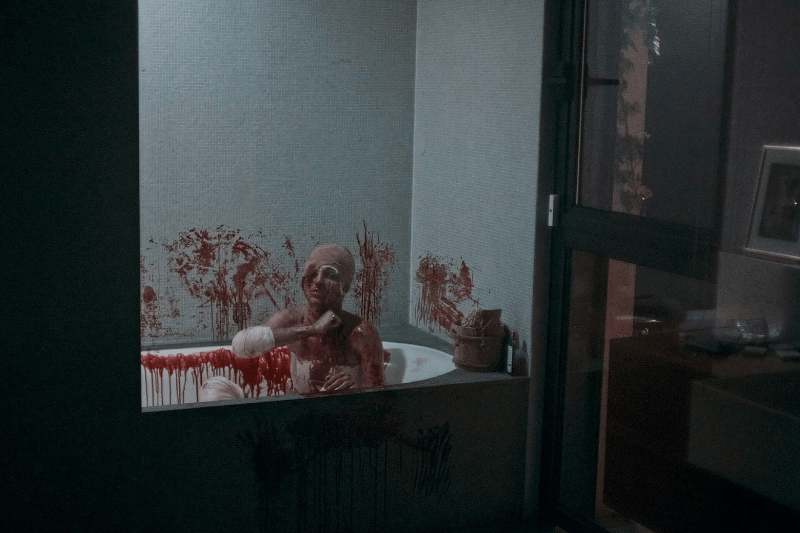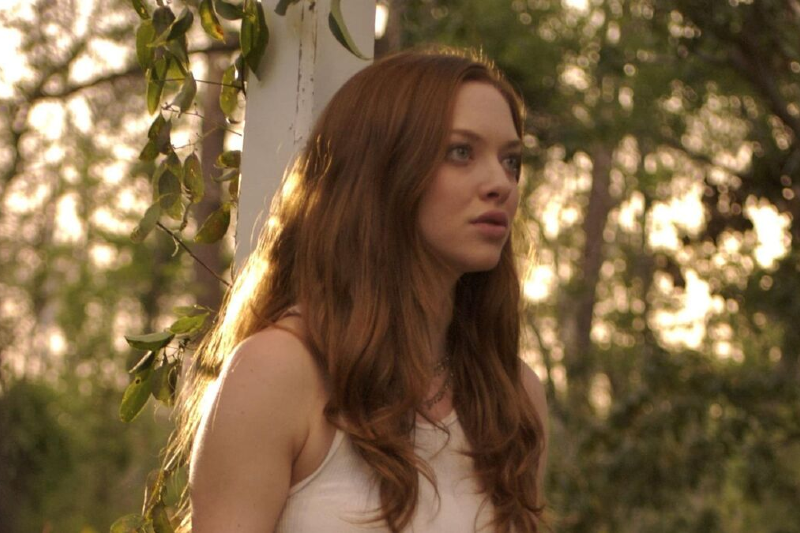If I were to pitch you on a zombie movie shot in a single take, you probably wouldn’t need to know much about the talent involved to make up your mind. Right out of the gate, you would know if that is something you would seek out immediately or avoid at all costs. That’s the challenge of a film like David Moreau’s MadS. The newest Shudder title was a hit at this year’s Fantastic Fest, but the concept feels sweaty enough on paper to give people pause before checking it out. And if you feel the same, you might be pleased to learn that MadS both is and isn’t exactly what you’re hoping for.
Romain’s (Milton Riche) night hasn’t exactly gone according to plan. What began with a simple run for his birthday party favors – including a free bump and baggie of his dealer’s mysterious drug – takes a turn for the violent when an unknown woman breaks into his car. She hands him a recording device full of medical experiments and tries to convince him to change course – but when he demands to drop her off at the nearby hospital, she plunges a knife into her neck, leaving Romain with a dead body and the beginning of a very bad trip.
Since that’s not exactly the sort of thing you share with your girlfriend when you’re a teenage boy, Romain still agrees to meet Anaïs (Laurie Pavy) and her friend Julia (Lucille Guillaume) at the party – even when the body of the woman goes missing from his vehicle. Caught without a corpse and starting to succumb to the effects of his drugs, Romain watches as his night begins to spiral out of control and something dark inside of him bubbles to the surface.
One-shot features force us to reckon with the form over the substance; no matter how compelling the story might be, movies like MadS are often less interested in our immersion than our appreciation of style. It’s a fun idea on paper, but this approach can create problems when it comes to fully turning yourself over to a movie. Just as with a non-linear narrative – J.T. Mollner’s Strange Darling, for example – you are never not aware of the film as a series of creative and editorial decisions. Your engagement is fragmented right out of the gate.
So does that mean MadS is another exercise in style over substance? For a while, maybe. But then a funny thing happens: the filmmakers make the one-shot experience work in favor of the narrative, elevating the entire thing from a gimmick to a cohesive cinematic experience.
As the story is passed between the film’s three main characters – Romain, Anaïs, and Julia – MadS walks a fine line between an apocalypse and a bad trip. This proves to be the film’s best creative decision. It’s not quite that MadS wants us to think everything we’re watching is some drug-fueled fantasy; there’s plenty of evidence that the things happening onscreen are terribly real. But Moreau imbues his film with little touches of dreamlike logic, playing with chronology or audio cues to make each experience a subjective hellscape for his three teenage leads.
Why do soldiers disappear after cornering Anaïs in a neighborhood cantina? How does the military climb 20 stories to confront Julia in the rooftop suite of her apartment complex? Who cares? Romain and his friends are too baked and too cursed to make sense of the world around them, so MadS focuses on telling one continuous story in fragments of lucidity. What could feel like transitional fodder in other one-shot films – scenes where a character moves between Point A and Point B in real time – here is played for terrible pockets of self-awareness.
And that puts the burden solidly on the film’s three young stars to serve as the film’s connective tissue. The real breakout performance here is Pavy as Anaïs. In the film’s most provocative sequence, Anaïs peddles down the empty city streets, gunfire flashing in the distance as she alternates between snarling at nothing and frantically apologizing for her behavior. It’s a fearless performance, one that requires a big dramatic gestures and absolutely no safety net – but Pavy finds both tragedy and humor in a sequence that could’ve left other actors out to dry.
These little touches – the ever-expanding presence of the military, the bold performances of the cast – fully capitalize on the movie’s real-time approach. With no disrespect to the technical achievement that is MadS, a filmmaker’s ability to manage staging and editing in a one-shot feature is kind of the table stakes of the medium. The harder part is to create something that audiences can still lose themselves in – even as they are reminded every few minutes of the movie they are watching. MadS gets both the apocalypse and the pathos right, which makes the technical achievements all the more impressive.
Ultimately, if MadS has any comparable titles, it’s not Birdman or 1917, but rather, Danny Boyle’s 28 Days Later. Like that film, MadS finds fleeting touches of humanity in the end of the world, and plays with the conventions of digital video in a way that elevates (not restricts) the ideas present onscreen. It may never quite hit the highest notes that Boyle and company achieve onscreen – Riche’s Romain is more Faux Burnham than Jim – but it captures the same kind of innovative spirit that still allows 28 Days Later to set the bar for zombie movies. So believe the festival hype: there’s more here than just a one-take gimmick. [3.5 / 5.0]






